INTERACTIVOS'?09 - Garage Science - summary of selected proposals
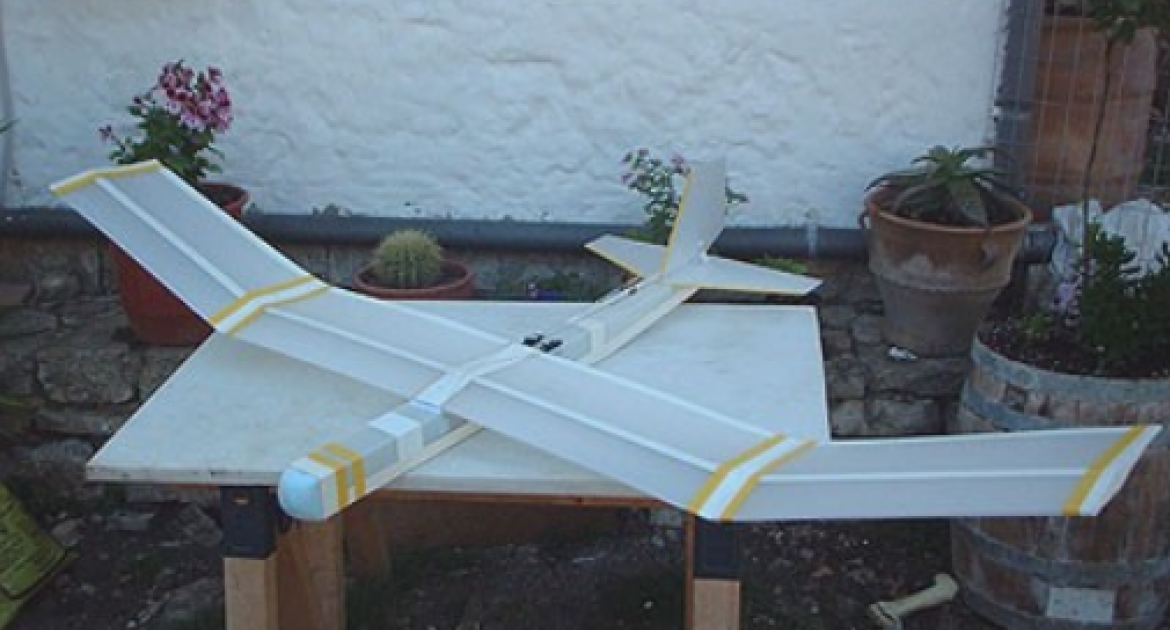
Rompetechos (Through the ceiling): an open air platform. Igor Gómez Gil de San Vicente
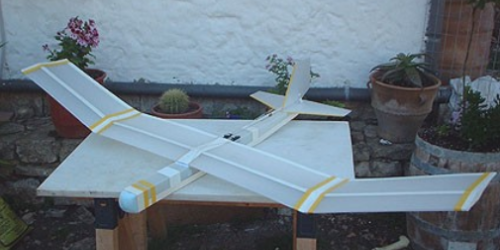
The project consists of building and putting into use an unmanned autonomous air platform to serve as the basis for a variety of applications and as an experimentation platform for artistic, technical and scientific projects.
Once it has been built, we will experiment with possible simple applications: dragging banners, aerial photography, gathering atmospheric data...
The Sounds of Science. Jay Barros
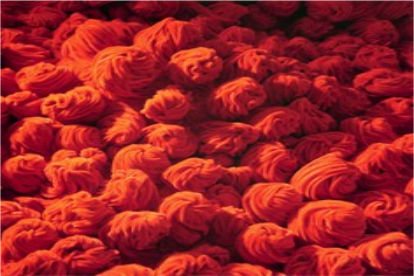
The Sounds of Science plans to utilize cheap domesticly avaliable equipment (primarely recycled) to create audio visual remixes of sounds and images captured from our home urban micro-enviroment, to “lay-down” some beats and frequencies that serves as a musical score for a visual journey that shows the audience what astonoshing realites exist beyond the realm of 100x vision.
Glob@s (Balloons). Susanna Tesconi
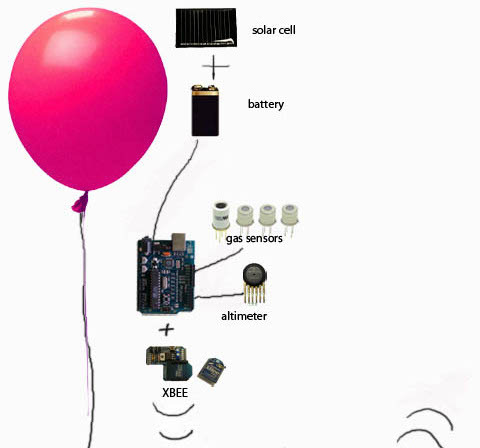
We aim to construct a homemade, cheap device that aids interested citizens in gathering data on the presence of pollutants in the air, in a way that is independent of institutions. It is a floating device, a balloon, that can be placed at various heights and in different places. A kit hanging from it detects the presence of gasses in the air. The device is independent in terms of energy, given that it is powered by a solar cell. Glob@s (Balloons) can show the presence of various gasses (nitrogen monoxide, carbon dioxide, methane, etc.) depending on the type of gas sensors with which it is equipped and can also show the height where it is located. Data related to gasses and height are sent through a wireless connection to a computer. Another objective is to create a way of representing the information provided by the device that groups of children can understand and use.
This project arose out of a prior collaboration with the project In The Air by Nerea Calvillo, developed during the Visualizar'08 Workshop at Medialab-Prado.
re:farm the city. Hernani Dias

Developing tools to manage/monitor/research an urban garden with open-software and open-hardware.
The objective is to develop the following features:
- control and monitorization of the garden in open-source language.
- map of vegetable species suitable for cities.
- visualization of the network of beneficial associations among plants and other species depending on geography, the time of year and the size of the garden.
- research of bioindicators for the chemical balance of the subsoil and the general health of the garden.
- creation of "instructables" on how to build an open-hardware watering and illumination system with city waste: computers, printers, traffic lights, large plastic bottles, etc.
Fruit Computer Laboratory. Alejandro Tamayo

It is well known that chemical reactions in fruits can produce an electrical flow using appropriate electrodes. Fruit electricity has been used experimentally for turning on LEDs and powering small electronic devices. But, could chemical reactions in fruits be also used to create on-off switches, the basic building blocks of computer logic and memory? Would it be possible to create a computer with fruits? This project proposes to create a temporary laboratory, open to the general public, that will raise questions and reflections about the construction of a future computer based on fruits.
Build a 3D Printer: Zach Smith Smith
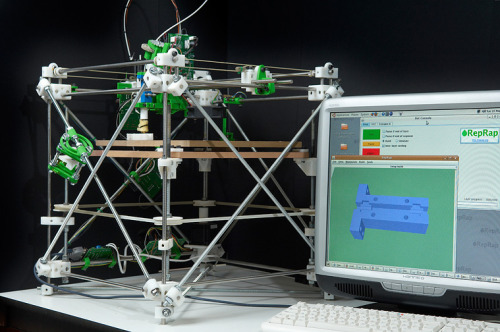
RepRap is an open source project that has created a design for self-replicating 3D printer. It is still a bit rough around the edges, but is capable of doing real, useful things.
This workshop will first focus on building a fully functional RepRap machine. Once it is functional, there are a variety of paths the workshop could take, which I would prefer the participants to choose.
Depending on what they'd like to do, we could:
* Self-replicate, using the machine to build a copy of itself and then assembling that machine. Modifying the design to fix any problems encountered during assembly would be an interesting challenge.
* Create a new extruder design. There are a variety of interesting materials that would be very useful in a 3D printing machine. One that is particularly intriguing to me is a print head that melts and extrudes Crayons to build objects in wax. These could be used to make colorful objects, or for lost-wax casting to make metal objects.
* Pick and Place toolhead. Building a pick and place toolhead would allow people to automatically assemble their own electronics. This is a critical step in increasing the amount of its components the RepRap machine can produce.
With the collaboration of StereoPrint, Servicio de Impresión Tridimensional
Garage Astrobiology – Microbes and EMF. Andy Gracie

A garage laboratory, resembling to some degree an astrobiology laboratory, for examining the effects of electromagnet fields and radio waves on microbial species cultured from the urban environment.
The project will commence with the collection of organic samples from the urban environment, various methods of extracting and culturing micro-organisms from them and 'getting to know' them. Development of some DIY laboratory equipment will form part of this process.
The project will then focus on developing a system of variable strength magnetic field generators and related apparatus which can be fixed to the culture vessels to form an 'input sculpture' – a device by which the organisms are exposed to various magnetic fields and the means by which their responses to these magnetic fields can be observed and recorded.
The Five Filters - Keyvan Minoukadeh
Edward Herman and Noam Chomsky described five 'filters' in their Propaganda Model to explain the output of the mass media: ownership, advertising, news sourcing, flak and anti-communism (recently anti-terrorism). This projects proposes to explore and describe these filters using newspaper clippings and a web search of related content from alternative news sources.
Hormiga Interactibus - Adrián Santuario Hernández

An ant plague threatens the workshop space. A robotic ant colony will be created during the workshop using simple electronic components. Ants live in colonies in a highly structured social network, that can be math modeled and then translated into a circuit. Therefore, we can create ants that react to light through light sensors and suggest some patterns through simple rules programed in the circuit. Ants will interact freely with the participants in the work space: some will die squashed by the careless, and others will colony the places addresed to other projects.



 Medialab-Matadero Madrid
Medialab-Matadero Madrid
